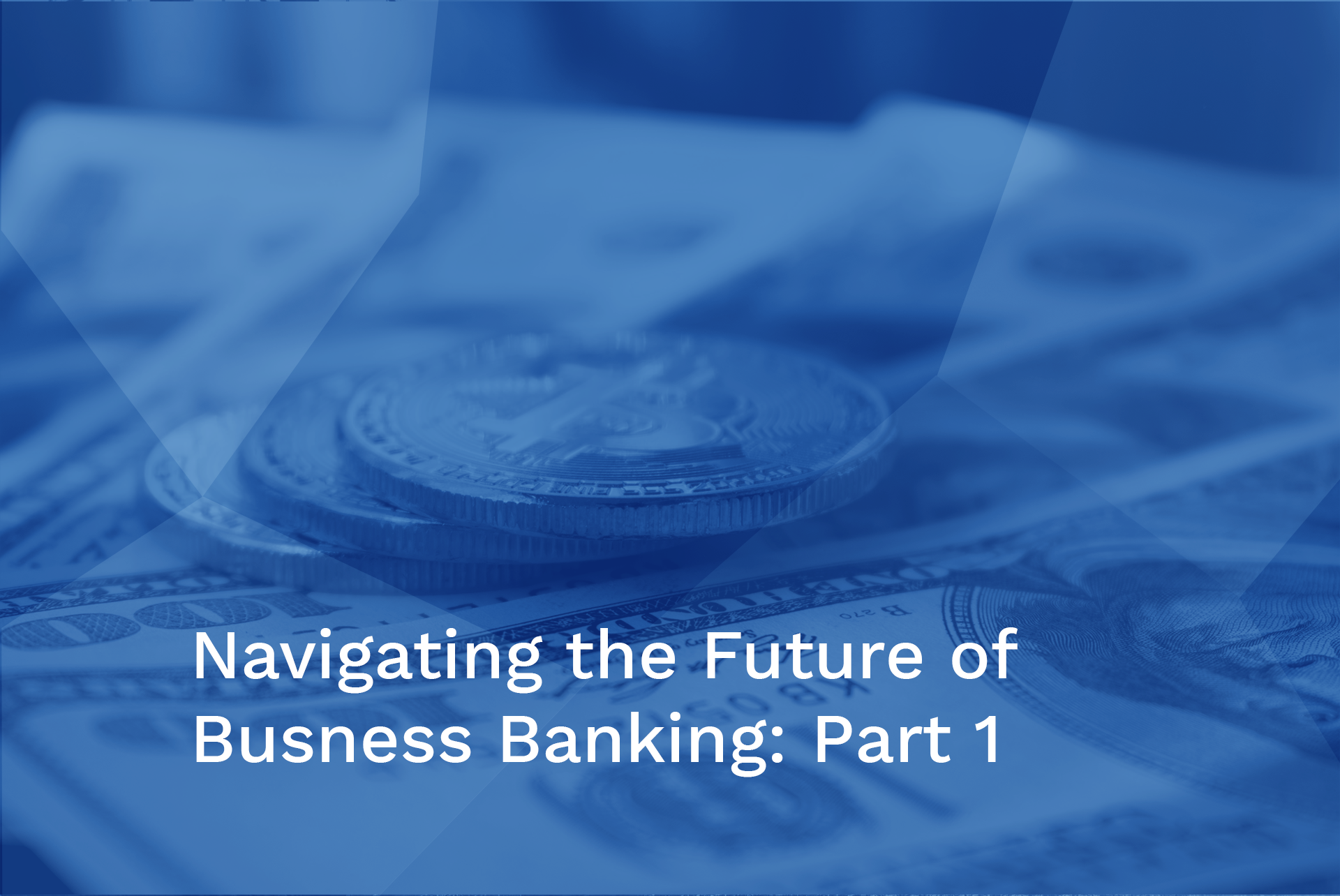
Navigating the Future of Business Banking Part 1
New technologies and digitally driven applications are driving transformation within the business banking space. The needs and expectations of businesses are evolving rapidly in line with these changes. This leaves banks at a crossroads- keep pace or risk being left behind.
From mid-market commercial banking to corporate treasury management, banks are now expected to deliver user-centric products and services to business clients, much the same way as they are delivering them to consumers.
Banks are realizing the need and urgency to deliver corporate financial services with an open, digital- first approach, and are aware that this needs to be a major pillar of their strategy going into the future. Positioning business banking offerings to thrive in the digital age is going to be key for banks wanting to remain industry leaders and ultimately to continue to win new business for years to come.
Results of a 2017 BDC benchmarking survey showed that a significant share of corporate banks have shrinking profits, particularly in the mid-market and large business segments.
Overall, the survey found that 45% of corporate banking divisions worldwide showed declining profits.
Innovation in Corporate Banking
Since the emergence of FinTech providers, banks have been continually challenged to innovate and take their existing business banking technologies, products, services to new heights. The pressure is on to grow their portfolio of servicing channels to meet the expectations of their digital-native customers.
This means leveraging the digital experiences and automation technologies that disruptors are bringing to the table to deliver on the needs of business banking customers. If not, banks risk their clients meeting those needs with FinTechs or from competitors with better digital programs.
Efficiency & Convenience
Banks are feeling the push from business customers to deliver a connected banking experience where the customer is presented with offers and updates at the right place and time. Business banking customers today expect digital experiences that use technology to drive value, make their businesses better and deliver an unmatched level of personalization.
Enhanced Banking Experiences
Usability is a critical factor in delivering better client experiences, especially as banks diversify and digitize their products and offerings. To satisfy a growing desire for frictionless experiences — and ultimately drive customer loyalty — banks need to leverage new authentication and permission management technologies.

Bank executives highlighted the top three areas of significant effort over the next five years1:
54% Enhancing customer data collection
53% Evaluating bank performance and best practices based on the customer viewpoint
50% Providing increased customer choice in configuring product features
1 https://www.pwc.com/gx/en/industries/financial-services/banking-capital-markets/banking-2020.html, https://www.pega.com/industries/financial-services
Finding a Balance
Creating these digital experiences is easier said than done-- especially when it comes to corporate banking customers, who are notoriously risk averse. Most banks do not know which business systems (enterprise resource planning (ERP), treasury management systems (TMS) or accounting system) their clients are using to manage their business processes. A better understanding of the tools and processes involved in their client’s workflows will allow the bank to design better experiences that match the context of the customer’s needs.
While 87% of senior banking leaders considered innovation to be important, only 17% say their own organization is prepared to innovate.
Meanwhile, 83% of financial executives know that open application programming interfaces (APIs) will play a significant role in the future of banking and payments. However, many banks struggle to identify and pursue the API connectivity options that will best serve their interests and those of their business banking customers. So, how can banks lay the foundation for the business banking experiences of the future?
Our next post in this series “Bridging the Gap” will dive into how banks can prepare to innovate.

